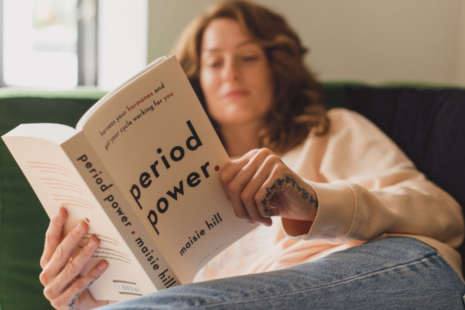Stiff neck, back pain? Many of us sit down for four or more consecutive hours a day whilst working, and our breaks are too often punctuated with yet more sitting for another two to four hours whilst Netflix and chilling. Experts weigh in on why sitting all day is worse for you than smoking and what you can do about it…
Physiotherapist Sammy Margo warns: “The dangers of such sedentary lifestyles are not simply due to reduced calorie burning, habitual inactivity leads to a slew of health issues known collectively as hypokinetic diseases.”
Sitting all day is worse than smoking
Studies confirm that sitting for more than an hour triggers changes in the body’s biochemistry, and this alters fat and glucose metabolism and promotes weight gain. And thanks to too much sitting, our lifestyles are driving an epidemic of musculoskeletal pain, with two out of five people experiencing problems at least once a week, and four out of five adults reporting they have suffered from back pain at some time in their lives. Back pain, followed by neck and shoulder pain, are the issues most commonly cited by those who believe poor posture contributes to health problems.
GP, Dr Dawn Harper says: “There is a growing body of evidence highlighting the link between sedentary lifestyles and back pain. We already have huge numbers of people reporting problems, and this is likely to continue to rise as a result of prolonged periods of inactivity, combined with an ageing and increasingly obese population.”
5 simple S.T.E.P.S. (Stretch, Therapy, Exercise, Posture and Strengthening)
Help manage and prevent back pain and reduce the risk of serious inactivity-linked illness with these 5 simple steps…
Stretching
According to a study of adults with chronic lower back pain, stretching exercises were more effective than yoga at reducing pain and improving mobility.
Postural alignment specialist, Jan Keller advises: “If your job involves sitting for long periods, incorporating five simple stretches into your routine on a regular basis will not only help prevent and ease back pain, it will also go a long way towards reducing your risk of ill-health associated with inactivity.”
Therapy
The next step to staying mobile is seeking therapy when things go wrong. Jan Keller says: “We instinctively seek something warming or cooling when we experience muscle pain — and there is sound science to confirm the efficacy of this approach.” The world-renowned Cochrane Library reports: “Heat may work by improving circulation and relaxing muscles, while cold may numb the pain, decrease swelling, constrict blood vessels and block nerve impulses to the joint.”
A clinical trial in patients with acute lower back pain found that a combination of thermotherapy (warmth) and cryotherapy (cold) provides effective relief from low back pain without the side-effects associated with pharmaceutical treatments.
Physiotherapist Sammy Margo advises: “Topical analgesics will also provide rapid relief without having to pop a pill.” Studies on topical analgesics have concluded they, “are effective and safe for the relief of moderately severe chronic pain attributed to arthritis, neuropathic conditions, and musculoskeletal disorders”.

Exercise
Physical activity has been shown to ease non-specific lower back pain and enhance healing. It also helps head off longer term pain and mobility issues.
Dr Dawn Harper says: “Doctors used to recommend bedrest for back pain, but the current guidelines are clear – getting mobile as quickly as possible, and keeping on the move, is the best way to relieve and prevent problems. Obviously you have to exercise intelligently. Walking is one of the easiest and most effective ways to keep mobile and increase strength.”
Posture
Our desk-based occupations and our increasingly sedentary lifestyles can lead to back pain because of poor posture. If it continues it can lead to longer term problems later in life, so it’s beneficial to know what good posture looks like.
Strengthening
A long-term solution to help prevent back pain is by strengthening the back-supporting muscles which weaken over time. And a strong core provides good support for the spine. Here are five exercises which are specially designed to strengthen muscles and help manage and prevent back pain.
Did you know
Experts in ergonomics advise anyone whose job involves sitting for long periods to take a one or two minute break to stand up and move around every 20 to 30 minutes.
Another approach, outlined in the British Journal of Sports Medicine, advises desk-based workers to break up their day with standing-based work, or switching to a sit-stand desk. The panel of international experts suggest initially aiming for two hours of standing or light activity and building up to four hours a day.
Research from www.mindyourbackuk.com – backed by Mentholatum
Get your weekly DOSE fix here: SIGN UP FOR OUR NEWSLETTER
















